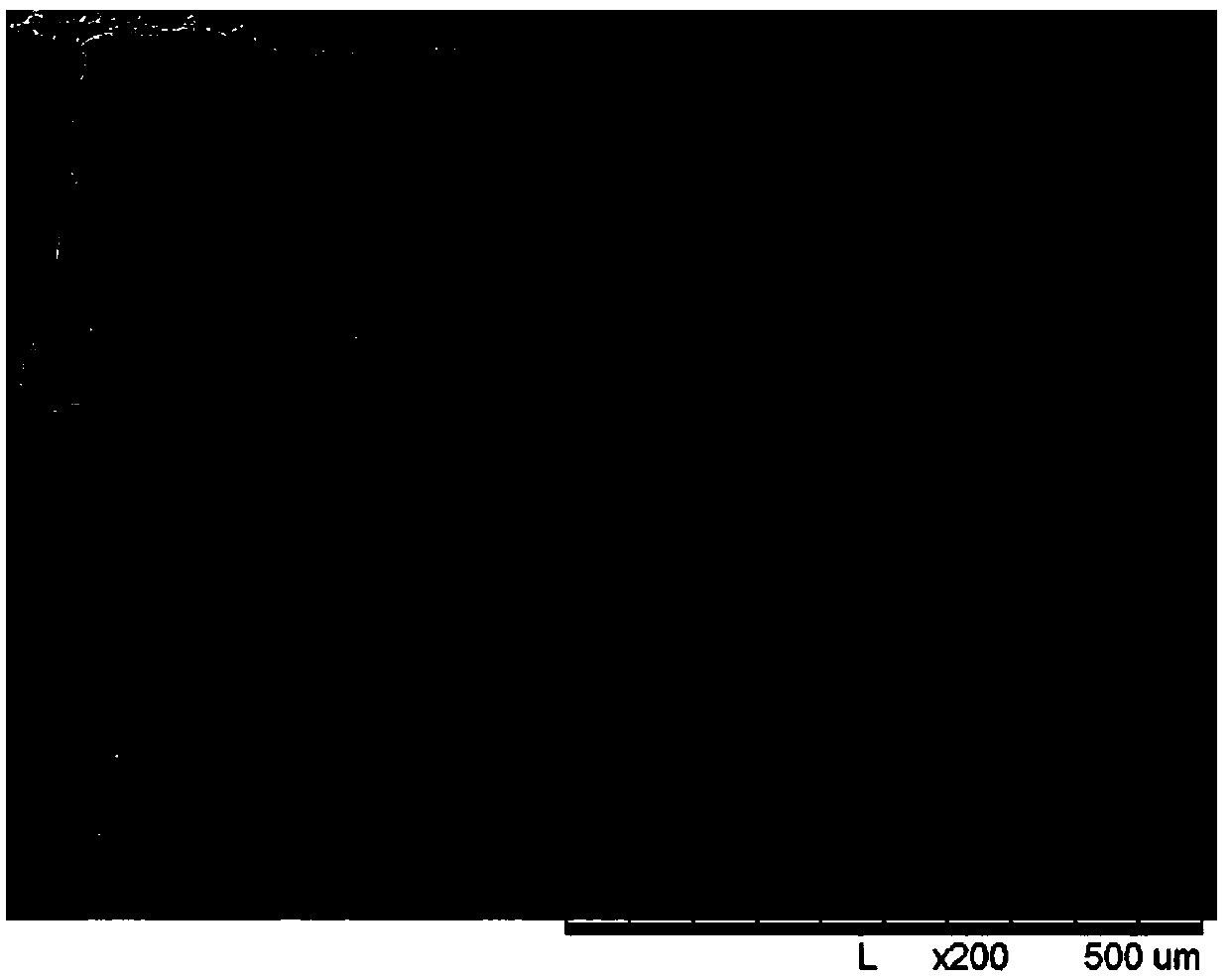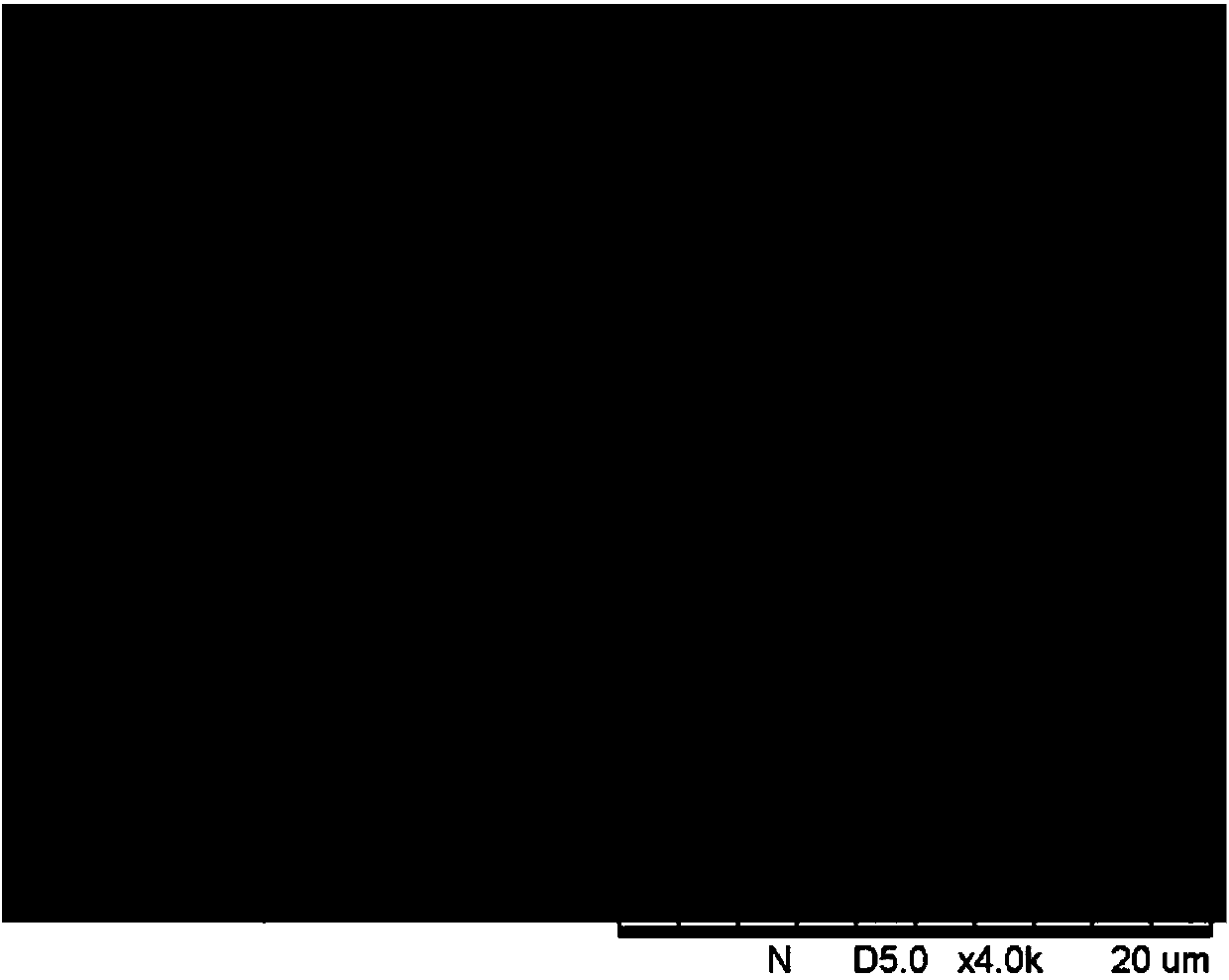ZnO nano flower and preparation method thereof
A technology of nano-flowers and cuttlebone, applied in chemical instruments and methods, light water/sewage treatment, energy wastewater treatment, etc., can solve the problems of difficult to improve economic benefits, waste of production raw materials, low catalytic efficiency, etc., to achieve convenient material collection, Uniform pores and large specific surface area
- Summary
- Abstract
- Description
- Claims
- Application Information
AI Technical Summary
Problems solved by technology
Method used
Image
Examples
Embodiment 1
[0033] Take 5.52mL of 0.25mmol / L aqueous solution and 0g of PEG600 prepared by zinc acetate with a mass of 0.300g, and place them in a 20mL polytetrafluoroethylene reaction kettle, stir magnetically for 30min at room temperature, and dry at a constant temperature React in the box at 90°C for 24 hours, and after the reaction, the reaction kettle is left to cool naturally. The obtained cuttlebone was repeatedly washed with distilled water and ethanol three times to remove the residue on the surface of the cuttlebone, and finally placed in a constant temperature drying oven at 80°C for 4 h to obtain ZnO nanoflowers loaded in three-dimensional channels. The product was observed with a scanning electron microscope (SEM), see Figure 1 for reference.
[0034] Wherein, the preparation method of the cuttlebone includes: selecting commercially available dried cuttlefish with a weight of 850-1025 g, taking out the sampan-shaped cuttlebone from the dried cuttlefish and removing the shell,...
Embodiment 2
[0036] Take 5.52mL of 0.25mmol / L aqueous solution and 0.900g of PEG600 prepared by zinc acetate with a mass of 0.300g, respectively, and place them in a 20mL polytetrafluoroethylene reactor. React in a drying oven at 100°C for 24 hours. After the reaction, the reaction kettle is left to cool naturally. The obtained cuttlebone was repeatedly washed with distilled water and ethanol three times to remove the residue on the surface of the cuttlebone, and finally placed in a constant temperature drying oven at 80°C for 4 hours to obtain ZnO nanoflowers loaded in three-dimensional channels. The product was observed with a scanning electron microscope (SEM).
Embodiment 3
[0038] Take 5.52mL of 0.25mmol / L aqueous solution and 1.800g of PEG600 prepared by zinc acetate with a mass of 0.300g and place them in a 20mL polytetrafluoroethylene reactor. React in a drying oven at 90°C for 12h, then adjust the temperature to 100°C and continue to react for 24h. After the reaction, the reaction kettle is left to cool naturally. The obtained cuttlebone was repeatedly washed with distilled water and ethanol three times to remove the residue on the surface of the cuttlebone, and finally placed in a constant temperature drying oven at 80°C for 4 h to obtain ZnO nanoflowers loaded in three-dimensional channels. The product was observed with a scanning electron microscope (SEM).
PUM
 Login to View More
Login to View More Abstract
Description
Claims
Application Information
 Login to View More
Login to View More - Generate Ideas
- Intellectual Property
- Life Sciences
- Materials
- Tech Scout
- Unparalleled Data Quality
- Higher Quality Content
- 60% Fewer Hallucinations
Browse by: Latest US Patents, China's latest patents, Technical Efficacy Thesaurus, Application Domain, Technology Topic, Popular Technical Reports.
© 2025 PatSnap. All rights reserved.Legal|Privacy policy|Modern Slavery Act Transparency Statement|Sitemap|About US| Contact US: help@patsnap.com


